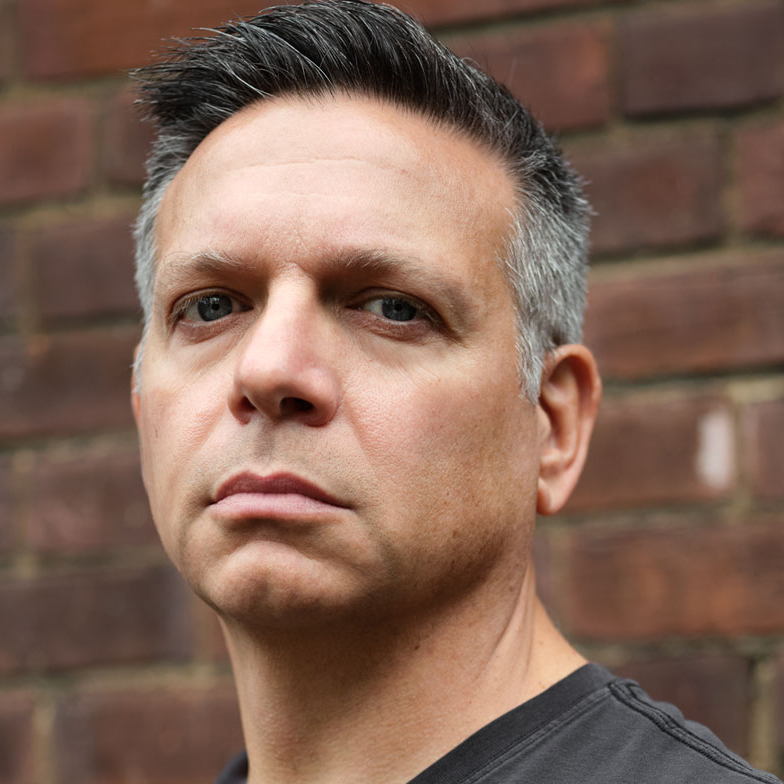
Can your gut help extend life after a heart transplant?
Dr. Jonathan Choy takes an experimental approach to increase heart transplant survival
Chapter 1 Helping transplanted hearts be accepted
The first heart transplant surgery was performed in South Africa in 1967. Canada’s first came soon after, in 1968. Development of this procedure allowed people with hearts that were damaged beyond repair to potentially have a new organ, and with that — an extended life.
While this was a revolutionary discovery, it initially had severe shortcomings. After a heart transplant, it’s common for the body’s immune system to see the new heart as a foreign object and attack it. This “transplant rejection” can happen days, weeks, months or years after surgery.
“Back then, we didn't have a strong handle on how the immune system works,” says Dr. Jonathan Choy, professor of molecular biology and biochemistry at Simon Fraser University in BC.
Thanks, in part, to decades of Heart & Stroke-funded research, anti-rejection therapy has improved. This type of research has led to substantial increases in heart transplant survival since the procedure was first performed. The worldwide survival rate is now about 90% one year after surgery. However, more improvements are needed because heart transplants continue to be lost at unacceptable rates after one year. And anti-rejection drugs have many detrimental side-effects.
This is where Dr. Choy and his team come in: “It’s those gradual losses months and years after surgery that we're trying to get a handle on right now,” he says. “Our interest is understanding how the immune system rejects the new heart, in order to find ways to prevent that without suppressing the whole immune system.” Through his research, Dr. Choy is fighting for the hundreds of people who need new hearts each year in Canada.
Chapter 2 An experimental edge
Dr. Choy attacks questions by experimenting, and he’s made some key discoveries so far. As a Ph.D. student, he was interested in how the immune system kills virus-infected cells and wondered whether similar processes trigger arterial diseases that cause heart transplant rejection and the most common type of heart disease, atherosclerosis.

Heart & Stroke donors made Dr. Jonathan Choy’s crucial research possible.

Dr. Jonathan Choy talking to his research assistant Jenice Dumlao.

Heart transplants extend life but aren't curative. Dr. Choy’s team is finding out ways to increase the longevity of this treatment. (In the photo: Franklin Tam, Dr. Choy’s research assistant.)
He noticed that the immune proteins granzyme B and perforin, which are important for killing virus-infected cells, are misdirected towards blood vessel cells, contributing to heart transplant rejection. Later work by others showed that granzyme B contributes to atherosclerosis.
Dr. Choy hasn’t lost his experimental edge. “We’re in the early stages of experimenting with the gut microbiota,” he says. The gut microbiota is the community of microbes (bacteria, fungi and viruses) that normally inhabit our intestinal tract. This community is known to affect many of our bodily functions, including immune activation. “Our hope is that if we understand how differences in the gut microbiota affect how heart transplants are rejected, the gut microbiota can be modified.”
Driven by relentless curiosity, one of Dr. Choy’s graduate students tested the differences in the immune system of model animals after the gut microbiota had been altered by changing the time when bacteria colonized the gut after weaning. There was a stark difference in immune response towards transplant blood vessels when colonization was delayed.

Heart transplant rejection is a complex puzzle. Dr. Choy’s team is piecing it together by experimenting. (In the photo: Dr. Choy with his research assistant Javairia Rahim).
In this latter scenario, there was more damage of transplant arteries by a certain type of immune cell, called neutrophils. Dr. Choy and his team hope that once they identify how neutrophils are altered, the gut microbiota could be modified with supplements like probiotics or prebiotics to reduce damage to transplant blood vessels. This treatment, coupled with healthy lifestyle changes, could ultimately help slow rejection of a new heart.
Chapter 3 The importance of research diversity for Canada
"We don't yet know how to specifically block the immune system from reacting to heart transplants,” Dr. Choy says. “Knowing this will permit the development of therapies that permanently prevent rejection while allowing the immune response to react properly to infections and cancer – that’s the goal.”
Dr. Choy believes that without investigative, experimental research, and funding to support it, Canada would lose its responsiveness to the ever-changing needs of healthcare. The solution? Diversity.
“There are big challenges, like heart disease, that we know still need to be tackled in the future. But imagine in 10, 20 years from now, we have an unforeseen challenge. COVID is a great example of that,” Dr. Choy says. “To manage those challenges, we’ll need a diverse knowledge base to pull from, and investigator-driven research forms the foundation for this. Heart & Stroke’s Grant-in-Aid program funds this type of research, so it's really important.”
Currently, heart transplants are life-extending, but not curative. “It’s the only treatment for individuals whose heart disease gets to a point where the heart no longer works,” Dr. Choy says. “Right now, it's a matter of how to improve the longevity of the new heart to make it even better. We ultimately want to cure people.”
To the people and families he hopes to help, he says, “We’re working on it. As hard and as fast as we can.”

Real stories, real impact

Healing hearts after a heart attack
Dr. Emilio Alarcón is developing breakthrough therapies to repair damaged hearts and keep them beating

Katherine's unexpected battle
When life changed in an instant, she refused to give up hope

Loving life while living with heart disease
Three surgeries have changed Suji’s heart, but not her passion for life
